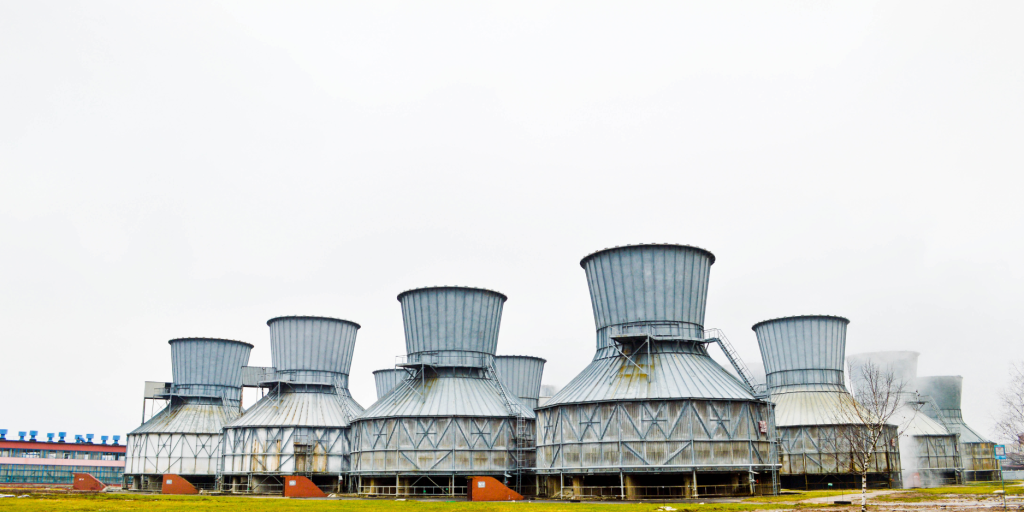
There are various industries that use cooling towers. Some of the most common applications of cooling towers include cooling circulating water used in chemical plants, refineries, power plants, petrochemical plants, and others. The cooling towers ensure an effective heat dispersion process to ensure the service equipment’s lifecycle is longer. If the water is not treated with cooling towers, it can result in microbiological growth, reduced plant productivity, unplanned downtime, and reduced longevity of plant operational equipment.
In this article, we will go through all the major aspects of cooling tower water treatment and understand how it works. Let’s start with the basics.
A cooling tower water treatment is an arrangement of technologies designed to remove damaging impurities from your cooling tower feed water, circulation water, and blowdown. The configuration of the cooling tower arrangement depends on multiple factors such as the type of cooling water open, circulating, once-through, or closed loop, feed water quality, chemistry/composition of the cooling water, regulatory requirements of discharge, heat exchanger type, and others.
The cooling water systems are designed to handle the following typical contaminants:
There are a variety of factors that determine the exact components of a cooling tower water treatment system, such as the quality of feed water or chemistry of circulatory water, along with the quality of water needed for the specific cooling tower and related equipment. Yet, in general terms, a cooling tower water treatment system consists of the following:
There can be multiple combinations of these technologies, and the type and composition of feed will determine which is best suited for your facility. Thus, it is always recommended that you consult with a water treatment specialist company like ours for cooling water treatment system installation. Depending on the needs of your cooling tower and process, these standard components are usually adequate. However, you may need to add additional features or technologies if your tower needs a system that offers a little more personalization.
These are the steps that a general cooling water system follows:
The role of makeup water is to replace evaporated or leaked water from the cooling tower. It is first drawn from the source, and it could be raw water, city water, city-treated effluent, in-plant wastewater, or any other surface water source.
The quality of this water will determine whether or not you require treatment. In the event that a water treatment system is required at this stage of the cooling tower water process, it is typically a technology that stabilizes and modifies the pH or eliminates silica and hardness.
Beyond what could be accomplished with chemicals alone, the right treatment at this stage of the process maximizes the tower evaporation cycles and reduces the water bleed rate to drain.
Now, the cooling tower water will pass through a series of filtration processes to remove suspended particles, including sediments, turbidity, and organic matter. This step is required at the early stage of the process, as the removal of suspended solids upstream can help protect membranes. It also protects ion exchange resins from fouling. As per the filtration type, suspended particles can be removed down to under one micron.
If the level of hardness is high in the makeup water, then the hardness removal treatment will also be required. For this, a softening agent must be used instead of the traditional lime process. You can leverage a strong acid cation exchange process in which resin is charged with sodium ions, and as the hardness comes through, it has a higher affinity for calcium, magnesium, and iron. Thus, it grabs the molecule and releases the sodium molecule into the water. If these contaminants remain untreated, they will cause scale deposits and rust.
Now comes the stage of adding chemicals. Various chemicals are added during the treatment, such as:
Thorough treatment before this stage is helpful for the reduction of the amount of chemicals needed for water treatment. It is essential to consider the cost of chemicals.
A side-stream filtering machine will be useful in eliminating any troublesome contaminants that have been entered by drift pollution, leaks, etc., if the cooling tower water is going to be circulated throughout the system. As a general guideline, roughly 10% of the circulating water will filter through if your cooling tower water treatment system needs side-stream filtration. Usually, it includes a high-quality multimedia filter.
This is the last stage in the cooling water treatment, which involves blowing down or bleeding from the tower. Depending on how much water the cooling plant requires to circulate for proper cooling capacity, facilities will choose to recycle and recover the water using some type of post-treatment, such as reverse osmosis or ion exchange, particularly in areas where water is scarce. This concentrates and removes liquid and solid trash, while purified water is returned to the tower and reused.
In this article, we have covered all the major aspects of the cooling tower systems and how they work. At WiproWater, we have vast experience in providing specialized wastewater treatment systems for cooling towers for various industries, including chemical plants, power plants, oil refineries, and others. Let us know your requirements.
